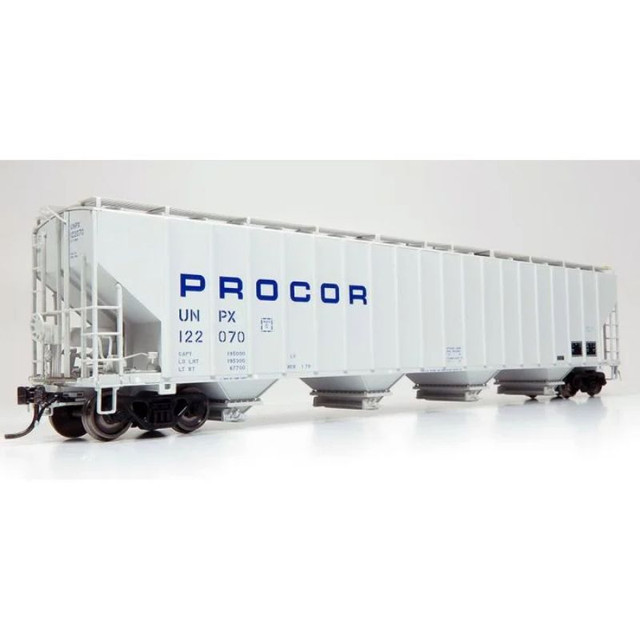Demystifying Railroad Covered Hoppers: The Workings and Benefits of Bulk Cargo Transportation
Railroad covered hoppers are specialized freight cars used for transporting bulk commodities such as grains, cement, sand, chemicals, and other granular or powdered materials. They are designed with a covered top to protect the cargo from the elements and ensure efficient transportation.
Here's a general overview of how railroad covered hoppers work:
Design and Structure:
Covered hoppers have a cylindrical or box-shaped body made of steel or aluminum. The walls of the car are typically sloped to allow for easy unloading of the cargo.
Loading:
Loading of the covered hopper car is typically done from the top. The top cover can be opened, either manually or using mechanical or pneumatic systems, to allow for the loading of the cargo. Loading can be done using gravity or through mechanical means such as conveyor belts or augers.
Cargo Retention:
Covered hoppers have internal partitions or compartments to separate the cargo within the car. These compartments help distribute the weight evenly and prevent shifting during transit. They also aid in efficient unloading by allowing selective discharge of the cargo.
Unloading:
Unloading of the cargo is usually performed from the bottom of the car. Covered hoppers are equipped with doors or gates located at the bottom, which can be opened to release the cargo. Various unloading methods are employed, including gravity discharge, pneumatic systems, or mechanical systems like rotary or bottom-dump discharge. The choice of unloading method depends on the type of cargo being transported and the requirements of the destination.
Safety Features:
Covered hoppers are designed with safety features to ensure secure transportation of the cargo. These can include secure locking mechanisms for the top covers and bottom doors, as well as safety appliances to prevent accidental opening of the doors during transit.
Railcar Management:
Covered hopper cars are managed by railroads or leasing companies, and they are typically part of a larger fleet of railcars. They are tracked and monitored as part of the overall logistics process to ensure efficient movement and timely delivery of the cargo.
Railroad covered hoppers offer several advantages for bulk cargo transportation, including protection of the cargo from weather conditions, improved efficiency in loading and unloading operations, and the ability to transport large volumes of materials in a single train.
Recent Posts
-
Prototype Spotlight: GE ES44AC — Modeling a Modern Freight Workhorse
Prototype Spotlight: GE ES44AC — Modeling a Modern Freight Workhorse Published 2025-09-29• 8–10 min
-
How to Build a Realistic Freight Yard: Flow, Trackwork, and Car Management
How to Build a Realistic Freight Yard: Flow, Trackwork, and Car Management Published 2025-09-25 • 8
-
Scenery Basics: From Foam to Foliage — A Quick, Budget-Friendly Guide | Midwest Model Railroad
Modeling Tutorial Scenery Basics: From Foam to Foliage Published 2025-09-23 · 7–9 minute read Li




